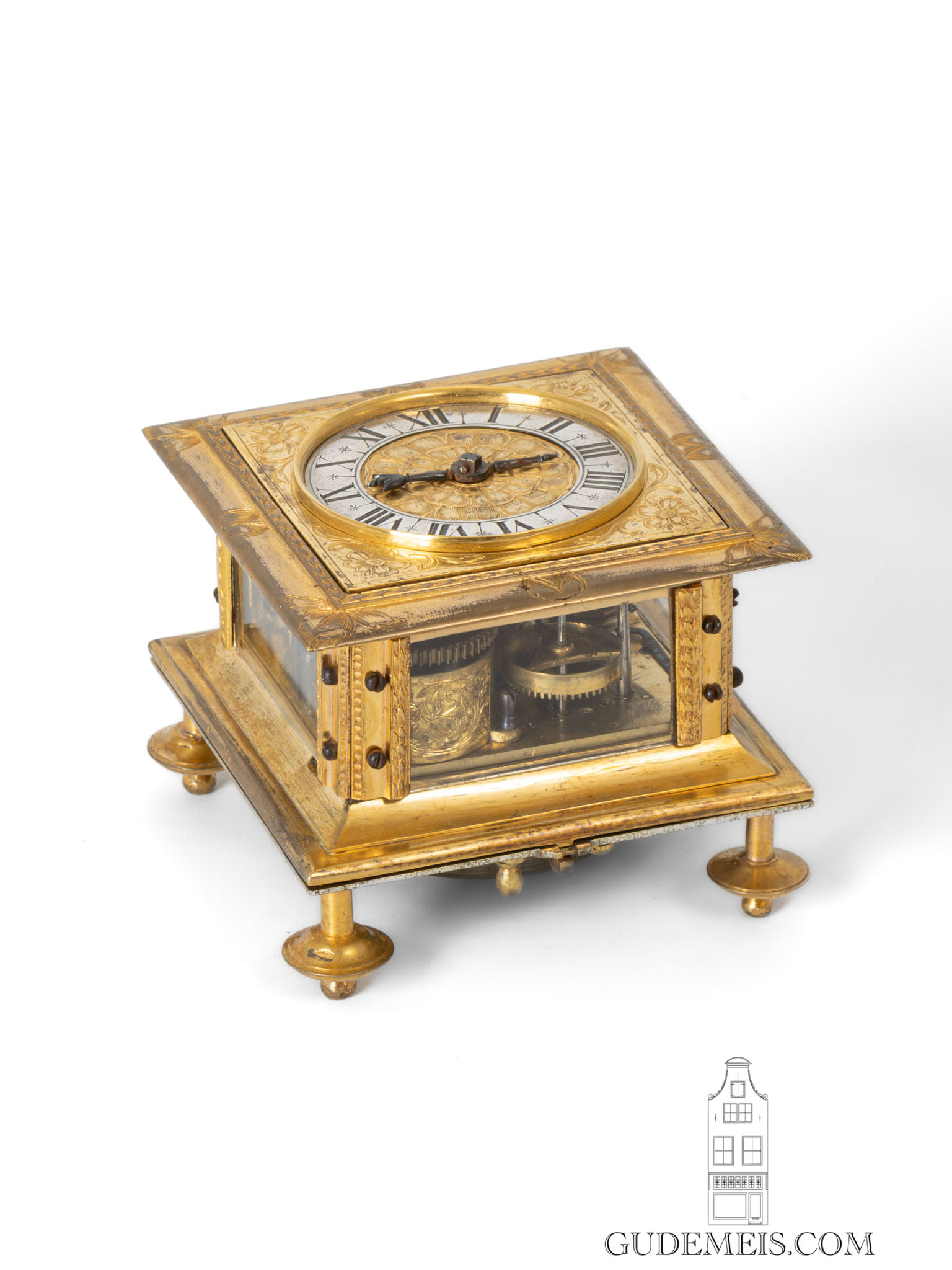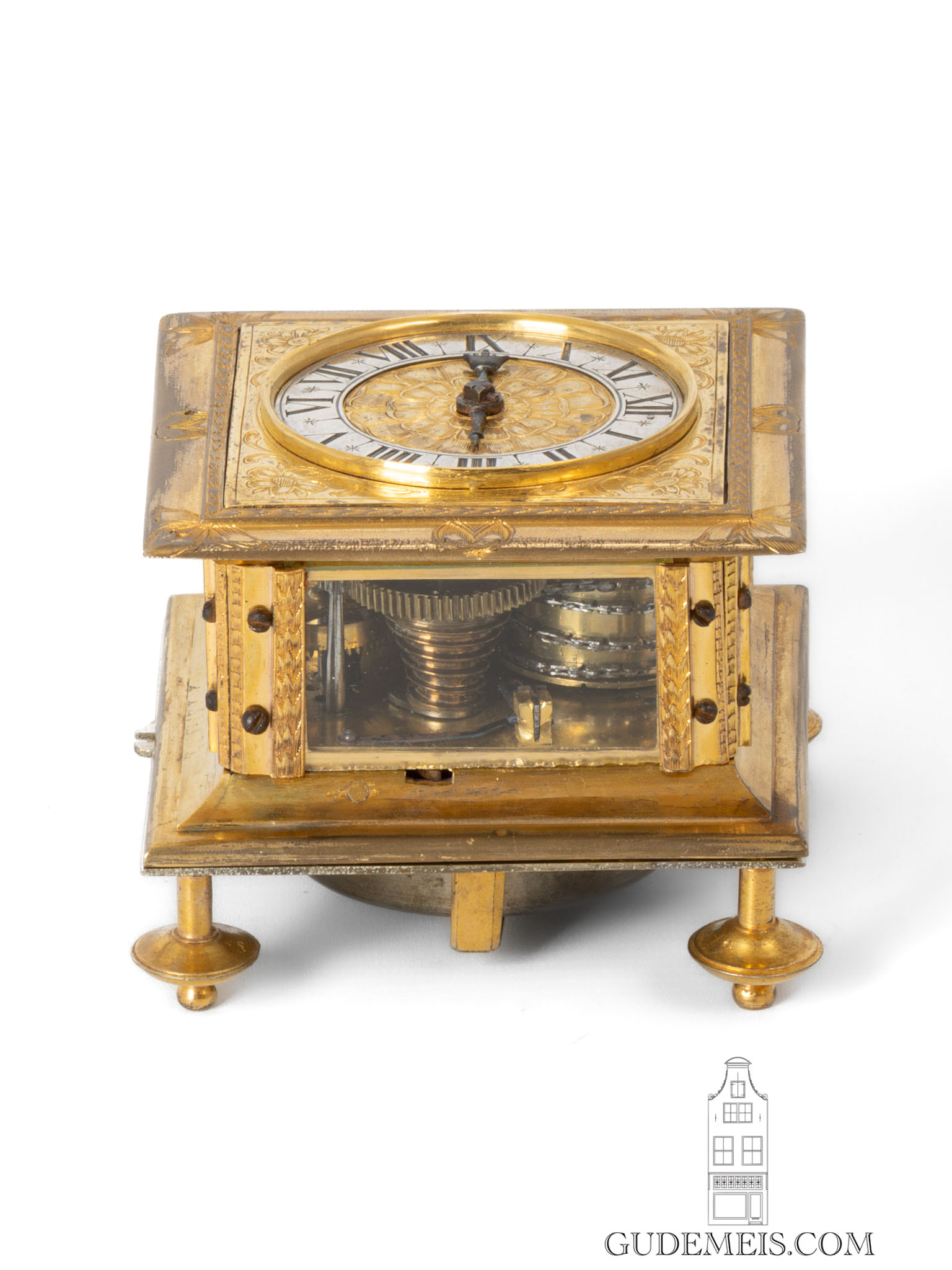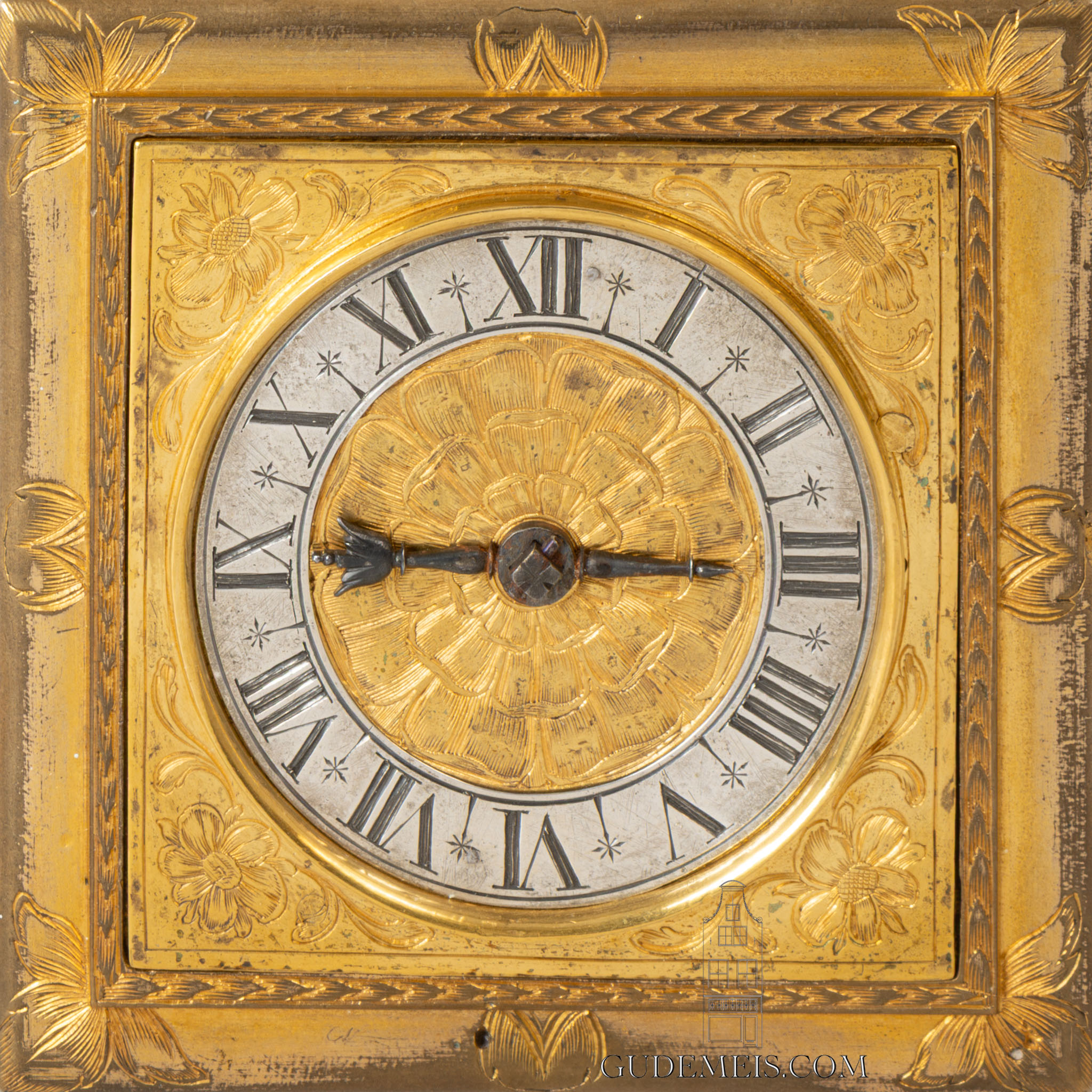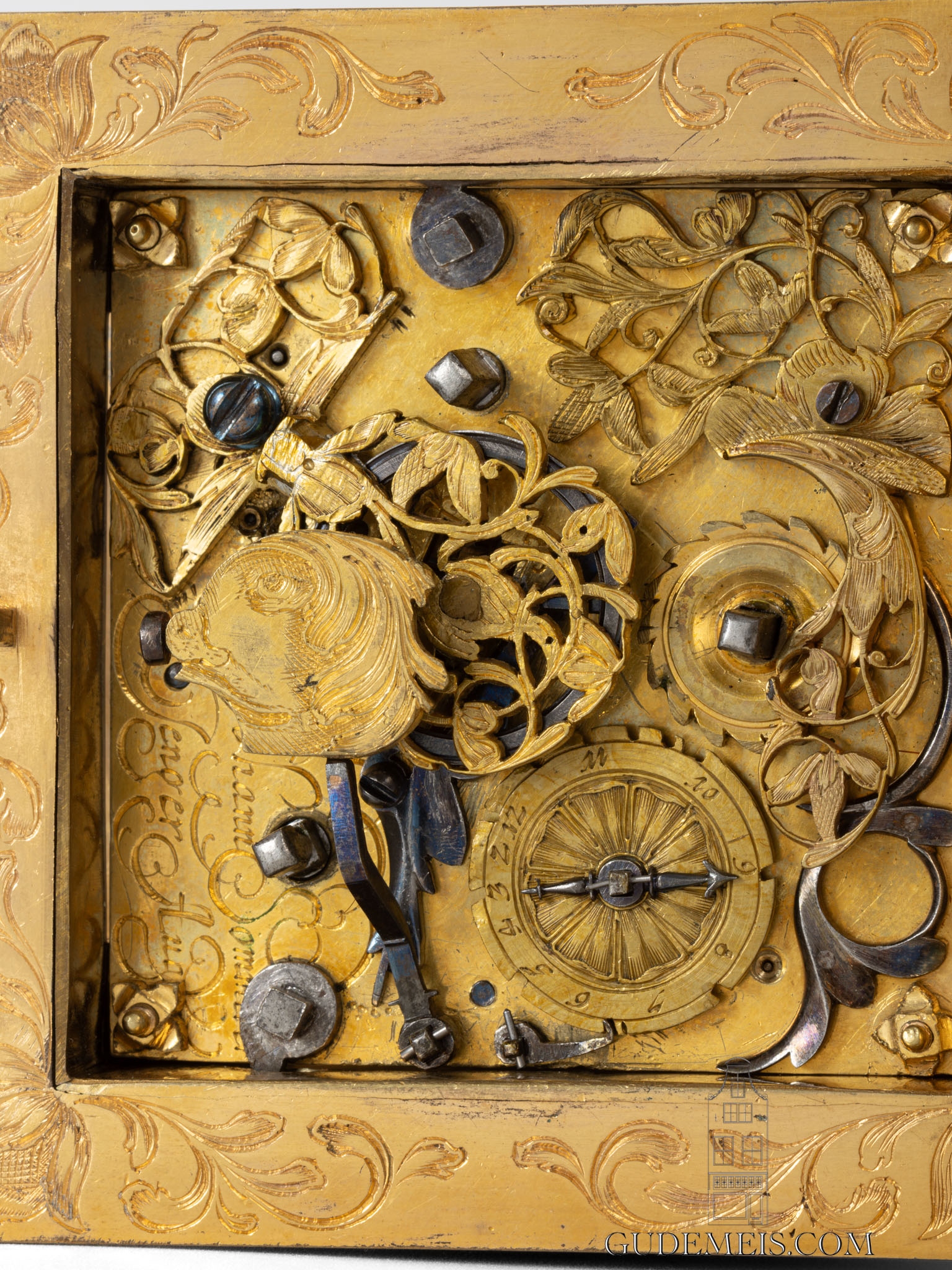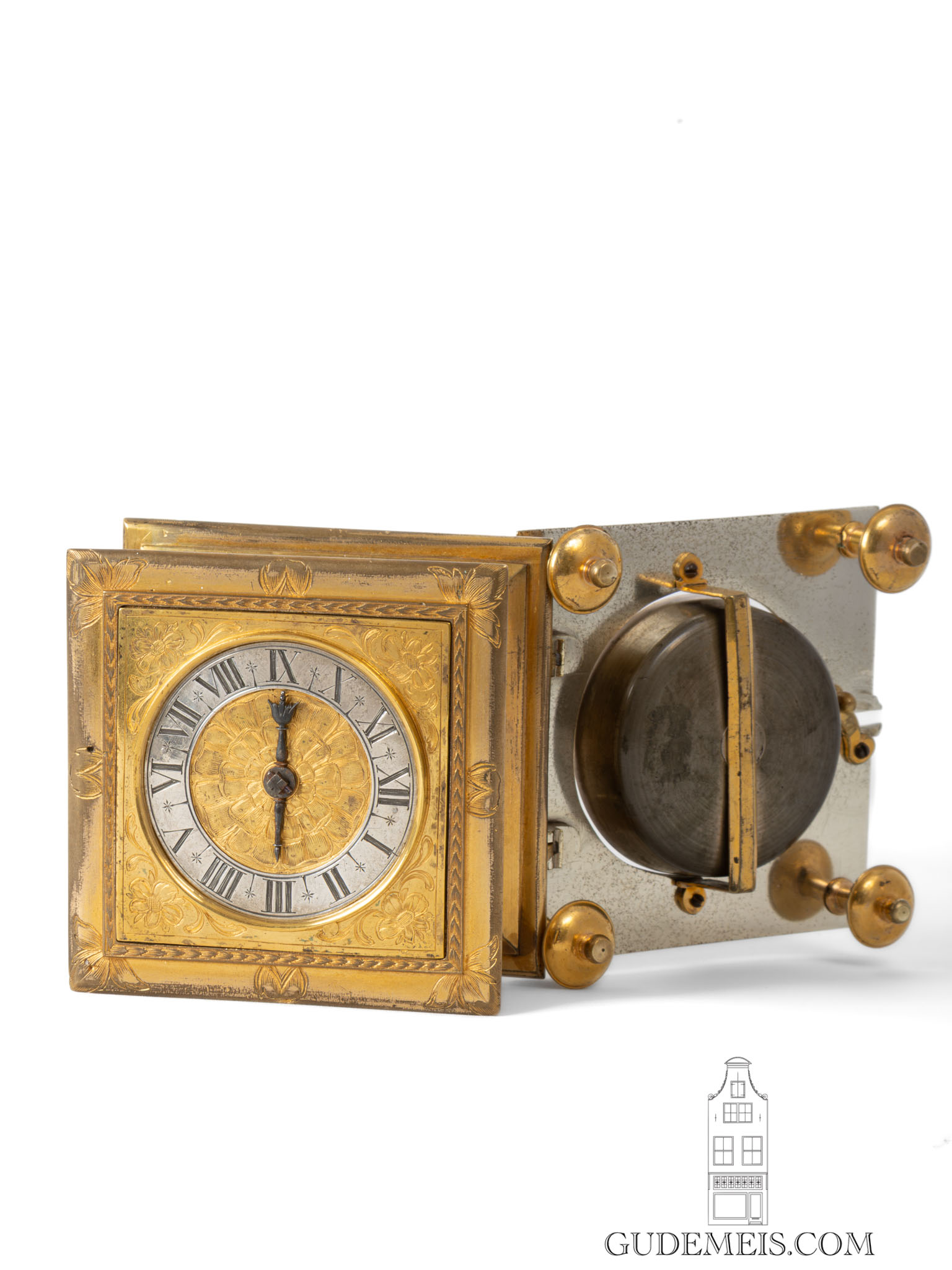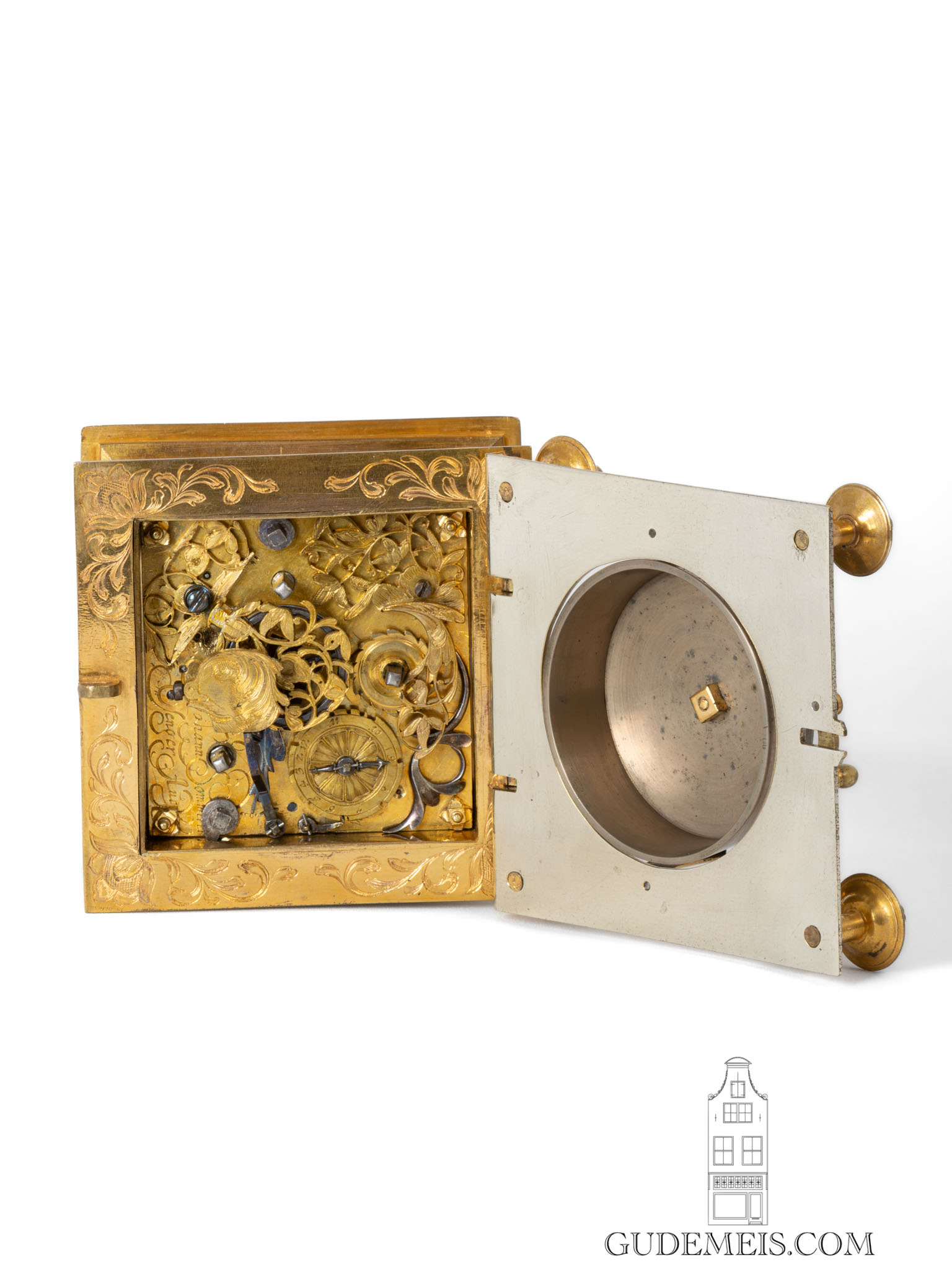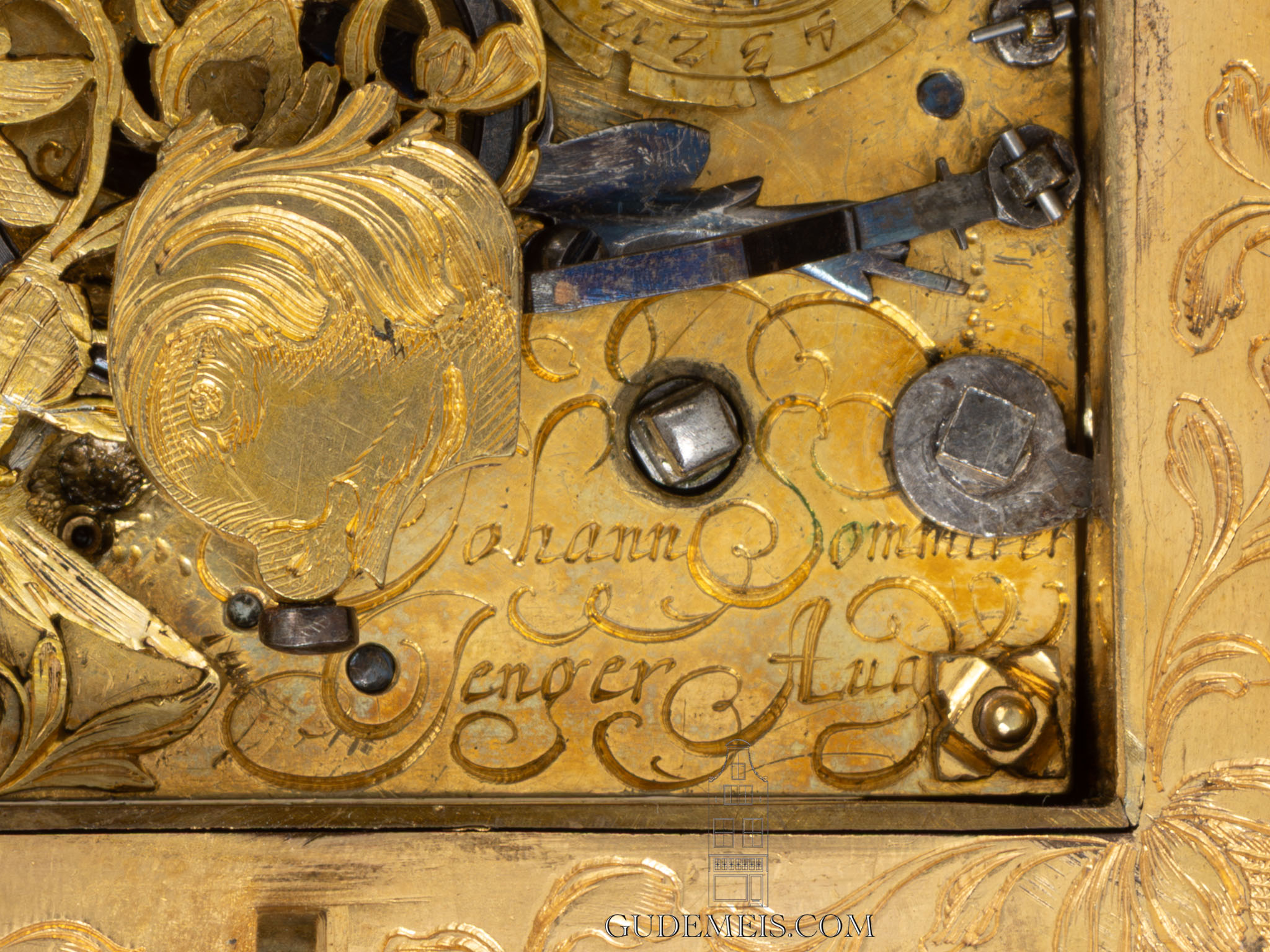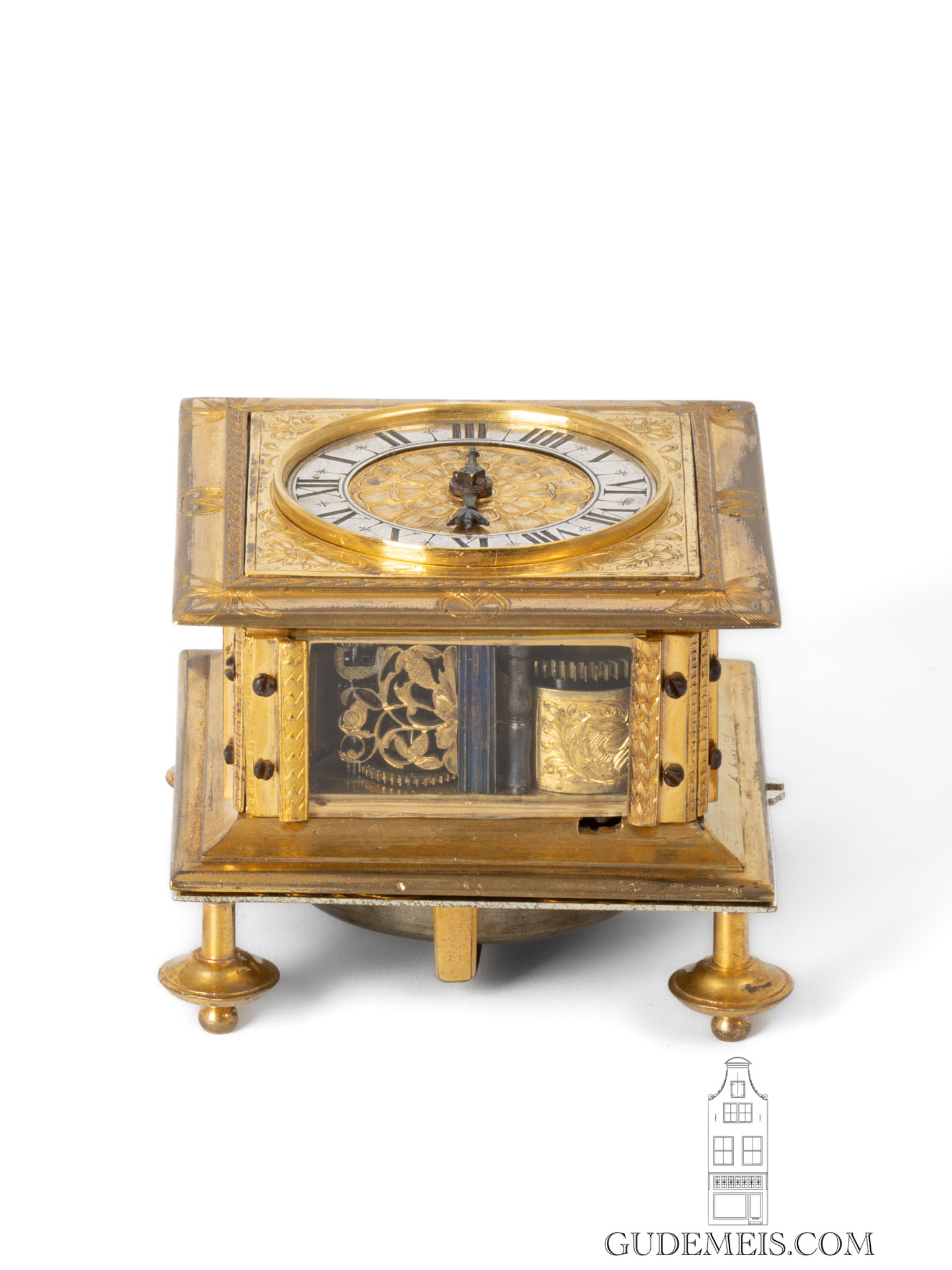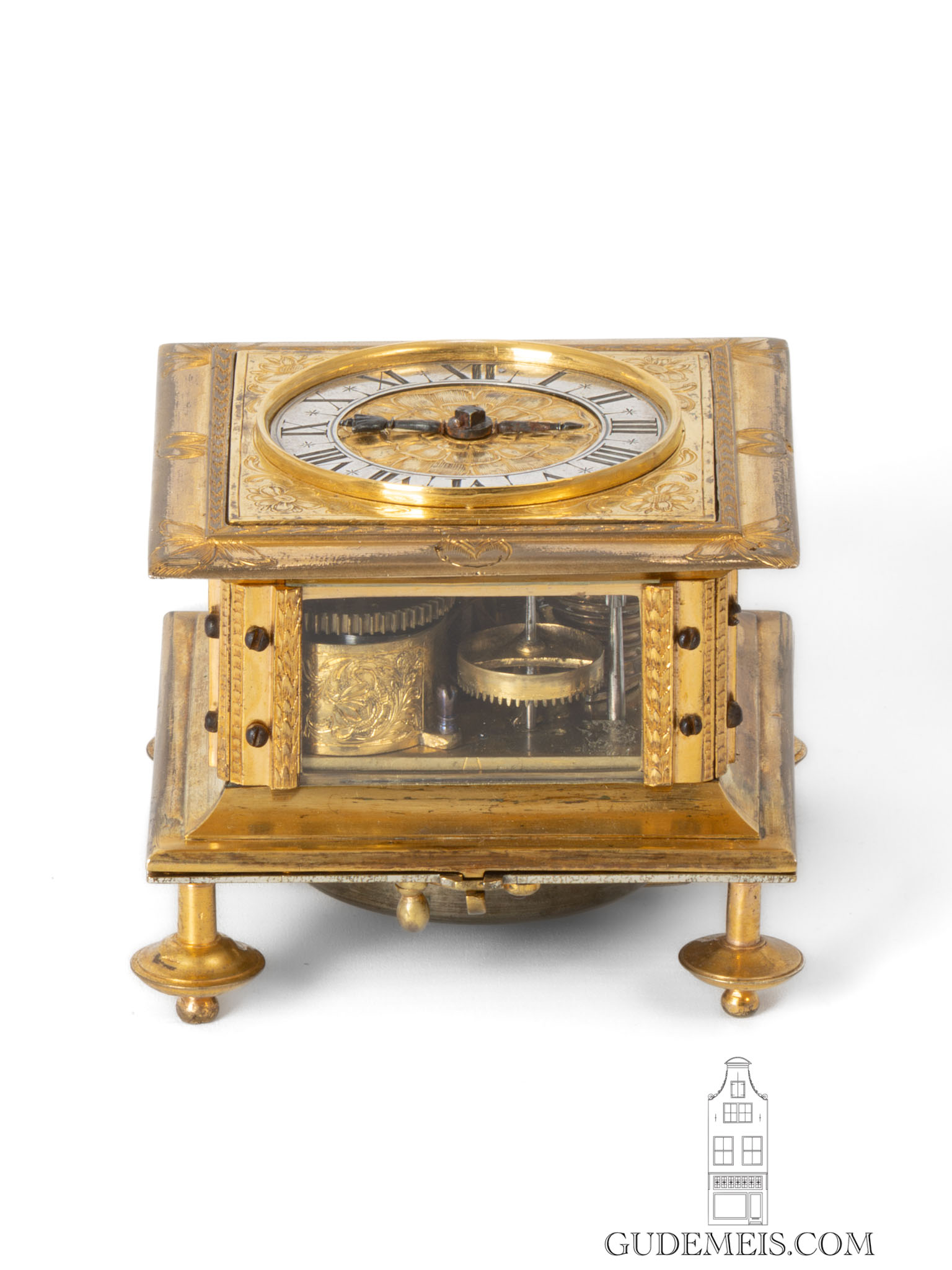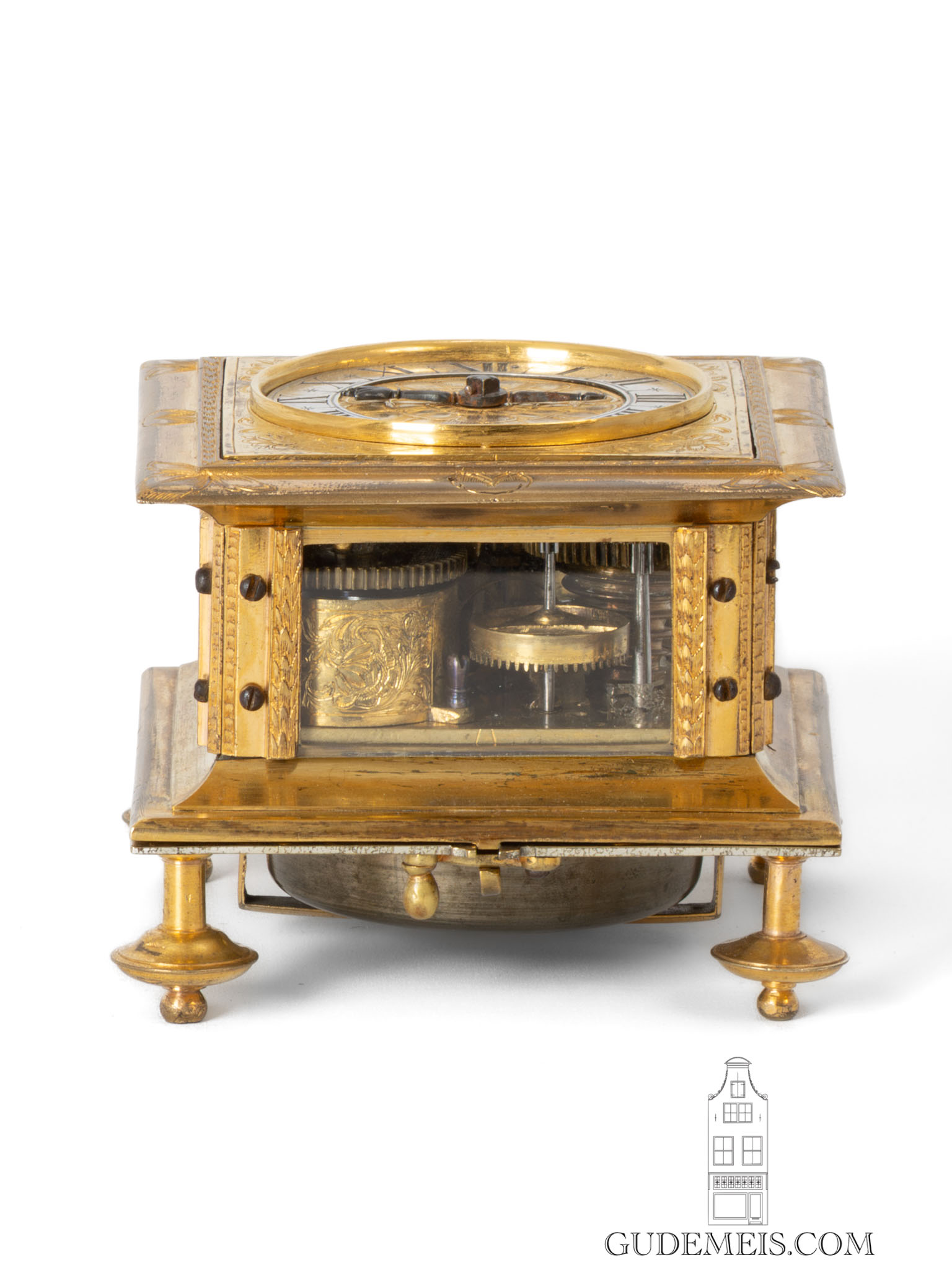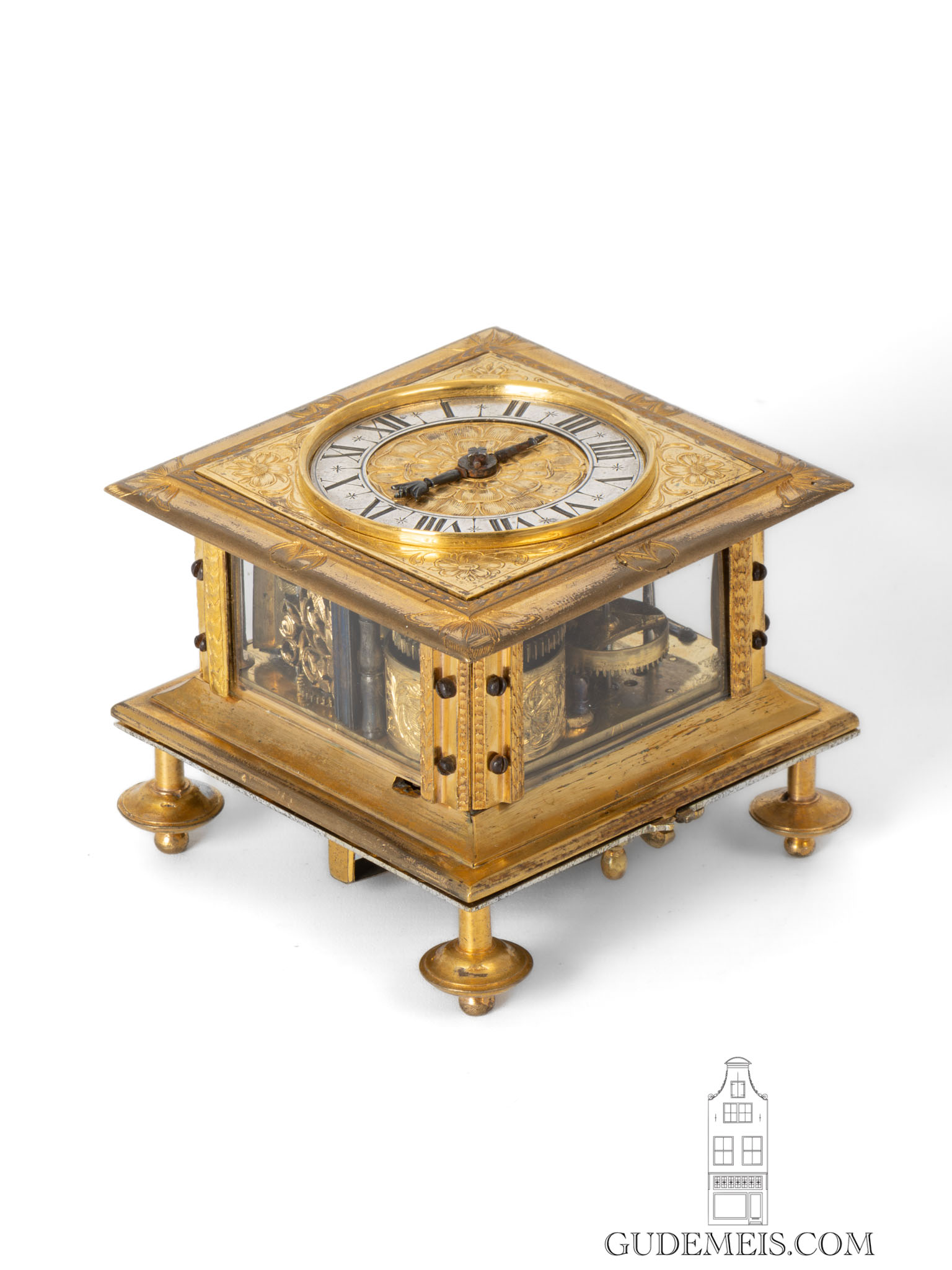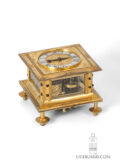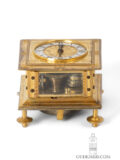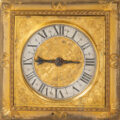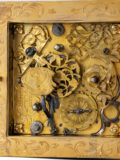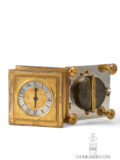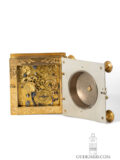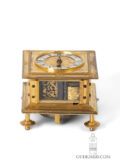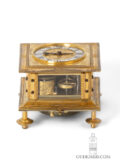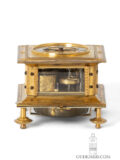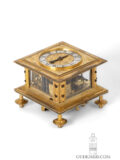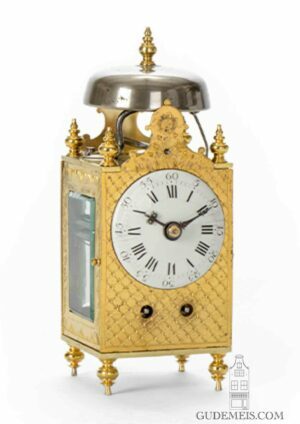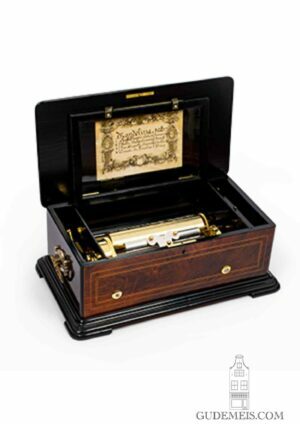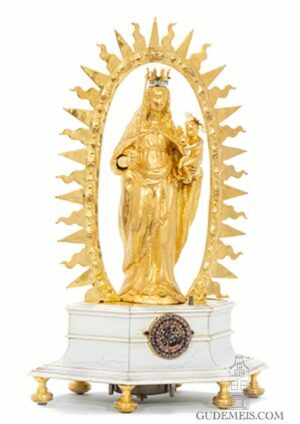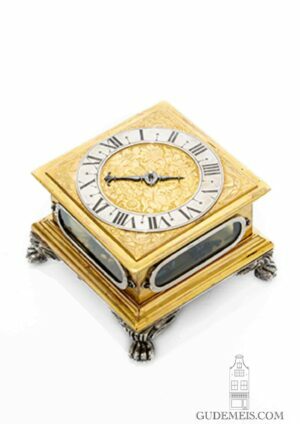A fine South German engraved gilt horizontal table clock by Johann Sommer Augsburg, circa 1650.
Description
Augsburg
During the 16th century, a clock-making tradition emerged in southern Germany, particularly in Augsburg and Nuremberg, characterised by the exquisite finish of both the cases and movements. Due to the clockmakers’ guilds’ very strict admission requirements, only the most skilled craftsmen could become master clockmakers. This is clearly evident in the craftsmanship with which the clocks belonging to this tradition are made. The buyers of these beautiful objects belonged to the highest circles of society, and owning such a clock was also a status symbol. The type of clock with the dial on top is referred to as a “horizontal table clock”. The earlier horizontal table clocks are square in shape, while the later ones are often hexagonal. It is not difficult to imagine that the admiration only increases the longer one looks at this piece. First it is the beautiful engraving of the dial that catches the eye. After that first impression when looking through the windows at the movement, one discovers that it is skilfully made and that many parts are beautifully engraved. Finally, when one turns the clock over and opens the bottom lid, one sees the exuberantly and beautifully decorated back plate and parts. An early clock, a beautiful and interesting object.
Rosette
The 6.3 cm diameter engraved silver dial has Roman numerals and a gilt centre with a beautifully engraved rosette. Further flowers are engraved in the corners around the raised bezel. The single blued steel hand has a tulip-shaped tip.
Chain and fusee
The movement is driven by a spring barrel in combination with a chain and fusee for the going train which has a duration of 30 hours. It is regulated by a verge escapement in combination with a balance wheel. The standing barrel of the striking train is beautifully engraved with foliate scrolls, as is the pierced striking gate. The clock strikes the hours on a bell by means of an engraved countwheel. The back plate has beautifull pierced and engraved cocks and is signed Johann Sommer Jenger Augsburg.
Gilt brass
The moulded gilded brass case is square in shape. There are glass panels to the sides that provide a good view of the beautifully executed movement. The silvered hinged bottom lid holds the bell and is raised on four turned feet.
Johann Sommer
There are several clockmakers known by the name Johann Sommer. This clock was probably made by the clockmaker who was born in 1608 and married in 1634. He died after 1666. Lit.; Jürgen Abeler, Meister der Uhrmacherkunst, pp. 531.
